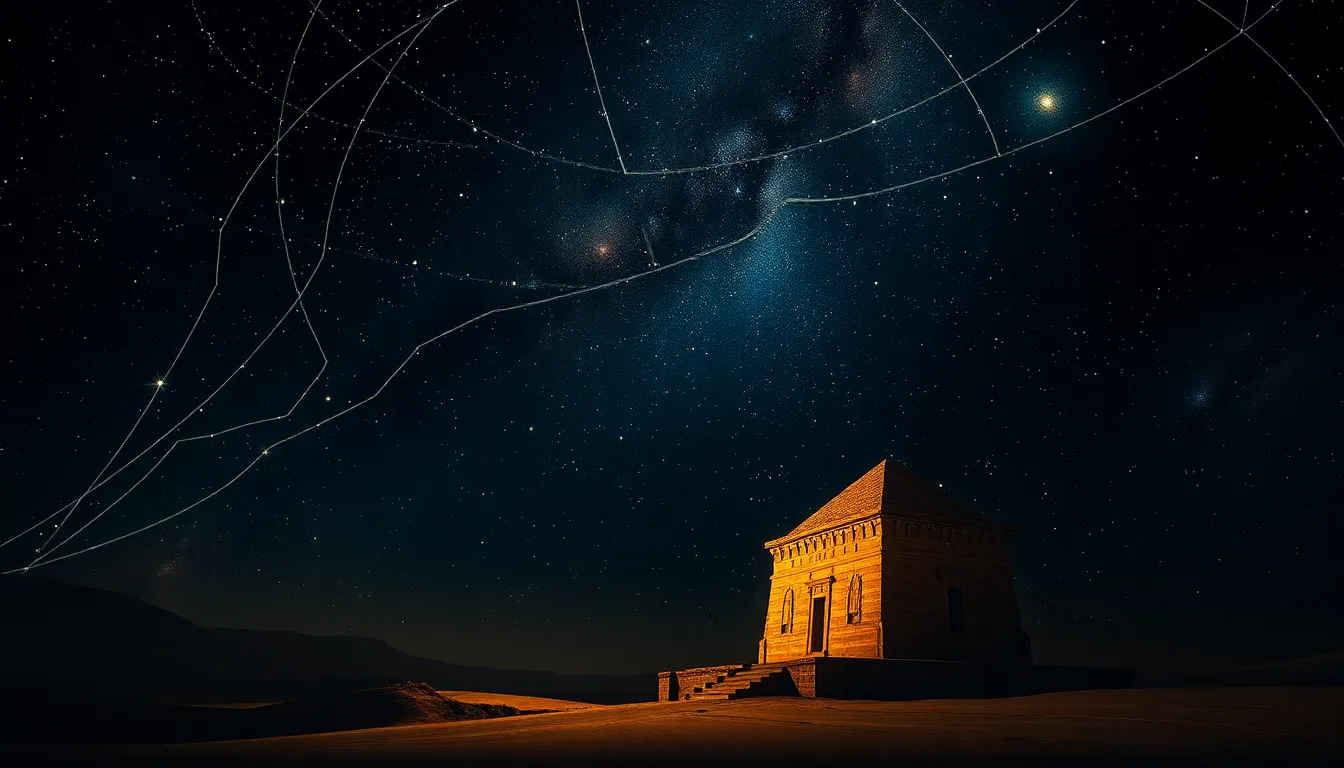The Star Myths of the Pharaohs: Celestial Navigation in Ancient Egypt
I. Introduction
Ancient Egyptian civilization, one of the most fascinating and enduring cultures in human history, flourished along the banks of the Nile River for thousands of years. Renowned for its monumental architecture, intricate art, and complex religion, this civilization also had a profound understanding of the cosmos. Celestial navigation played a critical role in the daily lives of the Egyptians, influencing everything from agriculture to architecture.
In many ancient cultures, the stars were seen not merely as distant lights but as integral parts of a grand narrative that intertwined mythology and astronomy. The purpose of this article is to explore the intersection of mythology and astronomy in Ancient Egypt, specifically how the Egyptians utilized their celestial knowledge to navigate both physically and spiritually.
II. The Role of Stars in Egyptian Mythology
The stars were deeply woven into the fabric of Egyptian mythology, with several key deities associated with celestial bodies. For instance:
- Osiris: Often linked with the constellation Orion, Osiris represented resurrection and the afterlife.
- Isis: Associated with both the star Sirius (Sopdet) and the Nile’s annual flooding, which was crucial for agriculture.
- Horus: The sky god, often depicted as a falcon, who was connected with the sun and the moon.
Mythological interpretations of celestial bodies helped the Egyptians explain natural phenomena and their own existence. For example, the rising of Sirius heralded the Nile’s inundation, a vital event for farming. Star myths served as a means to understand the world, offering cultural narratives that reinforced social and religious structures.
III. Ancient Egyptian Astronomy
The Egyptians were keen observers of celestial phenomena. They meticulously recorded the movements of stars and planets, leading to a sophisticated understanding of astronomy. Some key aspects of their astronomical knowledge include:
- Early Observations: Ancient Egyptians noted seasonal changes and the heliacal rising of stars, enabling them to create a calendar.
- Development of Knowledge: They used their observations to develop a lunar calendar and a solar calendar, which were integral to their agricultural practices.
- Tools and Techniques: The Egyptians employed tools like the merkhet (a sighting tool) and the gnomon (a vertical stick that cast a shadow) for celestial navigation.
IV. The Architecture of the Pyramids and Temples
The alignment of architectural structures in ancient Egypt with celestial bodies is a testament to their astronomical knowledge. This alignment served both practical and spiritual purposes:
- Religious Significance: Many pyramids and temples were designed to align with the stars, reflecting the Egyptians’ belief in the afterlife and the gods.
- Great Pyramid of Giza: Aligned with the cardinal points and the stars of Orion, this pyramid symbolizes the pharaoh’s journey to the afterlife.
- Temple of Karnak: Features a grand alignment with the rising sun during the solstices, emphasizing the connection between the divine and the earthly.
V. Celestial Navigation Techniques Used by the Pharaohs
The Pharaohs relied on various methods to determine direction and position through the stars. Some notable techniques include:
- Using the North Star: The North Star served as a fixed point in the night sky, allowing navigators to find true north.
- Observing Key Constellations: Constellations such as Orion and Ursa Major were crucial for navigation across the deserts and along the Nile.
- Influence on Trade and Military: Celestial navigation facilitated trade routes and military expeditions, enabling the Egyptians to expand their influence.
VI. The Legacy of Star Myths in Egyptian Culture
The celestial themes present in ancient Egyptian culture continued to resonate through later dynasties and into various aspects of life:
- Continuation of Themes: Later Egyptian dynasties maintained the celestial themes in their art and architecture, reflecting continuity in cultural beliefs.
- Influence on Art and Literature: Star myths inspired countless works of art, literature, and religious texts, highlighting their significance in Egyptian culture.
- Impact on Neighboring Cultures: Egyptian astronomical knowledge influenced neighboring civilizations, including the Greeks and Romans, shaping their understanding of the cosmos.
VII. Modern Discoveries and Interpretations
Recent archaeological findings have shed new light on the astronomical practices of ancient Egyptians:
- Archaeological Findings: Discoveries of ancient star calendars and astronomical instruments have provided insights into their celestial navigation methods.
- Advances in Technology: Modern technology, such as satellite imagery and computer modeling, has helped researchers understand the alignments of ancient structures.
- Relevance in Contemporary Culture: The fascination with star myths continues today, inspiring modern narratives and artistic expressions.
VIII. Conclusion
The intertwined relationship between mythology and navigation in ancient Egypt highlights the civilization’s profound understanding of the cosmos. The legacy of Egyptian celestial practices has influenced modern navigation and continues to inspire curiosity about our place in the universe. As we study ancient star myths, we gain not only insights into the Egyptian worldview but also a deeper appreciation for the celestial wonders that have guided humanity through history.




